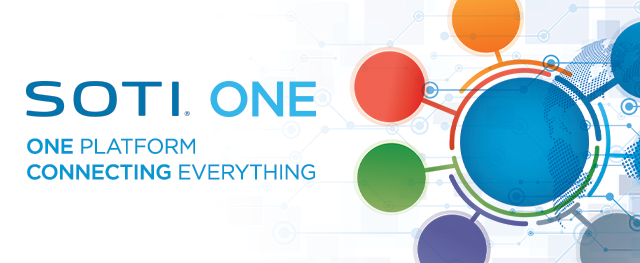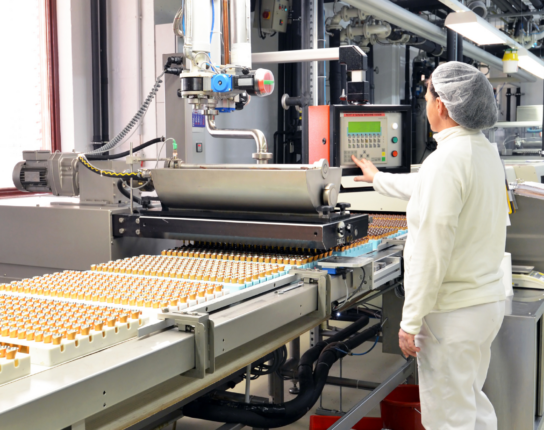This is a guest post by SOTI, one of our partners at IBIE.
For many people, the supply chain isn’t something normally thought about. It operates in the background with evidence of its existence being rolling trucks on the roads and stocked shelves in the stores. Really, it may be all about the trucks. If they’re full of goods and gas, everything else will take care of itself.
Then, of course, the pandemic struck. At its onset, half of humanity (approximately 3.9 billion people) were under some form of lockdown. At the same time, online shopping sales surged by $105 billion (USD) in the U.S.
These factors revealed weaknesses in transportation and logistics (T&L), resulting in the global supply chain crisis across all industries, including food and beverage manufacturing industries:
- Lack of visibility: Since the beginning of COVID-19, a staggering 72% of companies faced challenges in monitoring their end-to-end supply chain. The biggest challenges were keeping track of the location and status of inventory, forecasting customer demand and tracking the share of transport capacity.
- Sourcing: China is often called the “world’s factory” for its manufacturing industry. In China, 40% of all businesses experienced supply chain disruptions. In the U.S., 60% of businesses experienced delays in receiving orders from China.
- Maritime mobility: 80% of all goods are carried by sea and because of COVID, approximately 400,000 seafarers were stranded on the water on cargo ships. At one point, over 320 ships were queued up and waiting to dock at over 115 ports around the world.
- Higher shipping costs: China accounts for almost 30% of global manufacturing output, but the cost of getting those products from the factory to the front door has skyrocketed. Shipping a container from China to the North American west coast costs $17,507 USD and to the North American east coast costs $19,098 USD. This is four times the average cost of shipping prior to the pandemic.
Technology is going to play a big role in future supply chain crisis management
If diversity and resiliency are the destination for the post-pandemic supply chain, then mobile technology and digitization is how it gets there.
Even before the pandemic, the shift toward digitization was already taking place around the world. As far back as 2016, 70% of executives had already started the digital transformation of their supply chains. COVID-19 has only magnified the importance of the digital supply chain; even when companies were shuttered and revenues dried up, 92% of businesses did not halt their technology investments in the supply chain.
So, what can mobile technology do to help bring the supply chain back to normal?
- Forecasting: At the outset of the pandemic, there was a 186% spike in toilet paper purchases. Then a spike in hobby items. All this to say that consumer behavior is unpredictable and that leveraging historical trends to predict future ones wasn’t reliable. Artificial intelligence (AI) and machine learning can help direct companies on everything from inventory recommendations to distribution strategies. In fact, 90% of supply chain professionals believe AI will transform the supply chain for the better by 2025.
- Sustainability: Road freight is responsible for over 24% of CO2 emissions worldwide and the supply chain causes 90% of a company’s environmental impact. Sustainability has always been important, but the pandemic shifted the focus to maintaining business continuity. Once the pandemic ends, sustainability will be back on the forefront. Sensors on trucks can monitor everything from tire pressure to fuel efficiency and automation can predictively schedule vehicle maintenance to keep that part of the supply chain as green as possible. Meanwhile, eco-friendly warehouses use timers to control lighting, heat, water, gas and temperature.
- Quickly onboarding talent: S. trucking is short 80,000 drivers and many people who lost employment due to COVID-19 are looking to move into that industry. Technology can be used to attract and retain talent. And because of the supply chain crisis, management and HR departments want to onboard new workers as quickly as possible. Technology can also help with that by pushing learning content onto remote devices via Enterprise Mobility Management (EMM) or through apps as opposed to receiving it via in-class instruction.
- 3D printing: The pandemic revealed a stockpile shortage on personal protective equipment (PPE) such as masks, face shields and medical equipment like ventilators. 3D printers were able to close the gap and in the U.S., over 500,000 3D printed face shields and 348,000 3D masks have been manufactured and delivered to healthcare workers. With post-pandemic global supply chain crisis management, 3D printers can quickly spring into action to manufacture parts or components when necessary and keep the flow of goods moving.
- Mobile barcoding: In global supply chain crisis management, mobile barcoding has numerous benefits. Firstly, it digitizes the pen-and-paper processes that 55% of supply chain organizations still employ. This ensures data is captured accurately and shared quickly. Secondly, it eliminates hand-to-hand paper transfers and typing into a common workstation; giving peace of mind to workers who are still mindful of social distancing.

Managing Technology is Essential
When asked, 36% of executives said COVID-19 accelerated the digital transformation of their supply chains; ranging from mobile device deployment to rapid app development to incident management and operational intelligence to management of Internet of Things (IoT) devices.
Managing technology is equally important for supply chain crisis management as the technology itself. If T&L organizations can’t locate devices, push or pull content, remotely solve issues and access critical device data, they’ll find themselves at a disadvantage when the next supply chain crisis occurs.
The SOTI ONE Platform allows T&L organizations to reduce the cost, complexity and downtime associated with their business-critical mobile operations. When devices work, people can work; and the supply chain keeps moving.
When devices are in the field, companies can’t see what’s happening with them. They are unable to hold or touch the device to remediate issues. They don’t hear from the end user when a problem occurs.
Without remote access and monitoring software, companies can’t understand when issues occur, what’s causing costly device downtime and do not know how to solve the problem and improve future device performance. SOTI XSight extends your Enterprise Mobility Management (EMM) in order to gain deeper insights and greater control over your devices in the field.
See them for yourself at IBIE
SOTI has partnered with Harvest Food Solutions to bring the best in Enterprise Mobility Management solutions to food and beverage manufacturers. At IBIE 2022, SOTI will be demonstrating SOTI ONE and SOTI XSight and the benefits they can bring to your business. Visit us at the Harvest booth (#957) to view a demo at the event.











